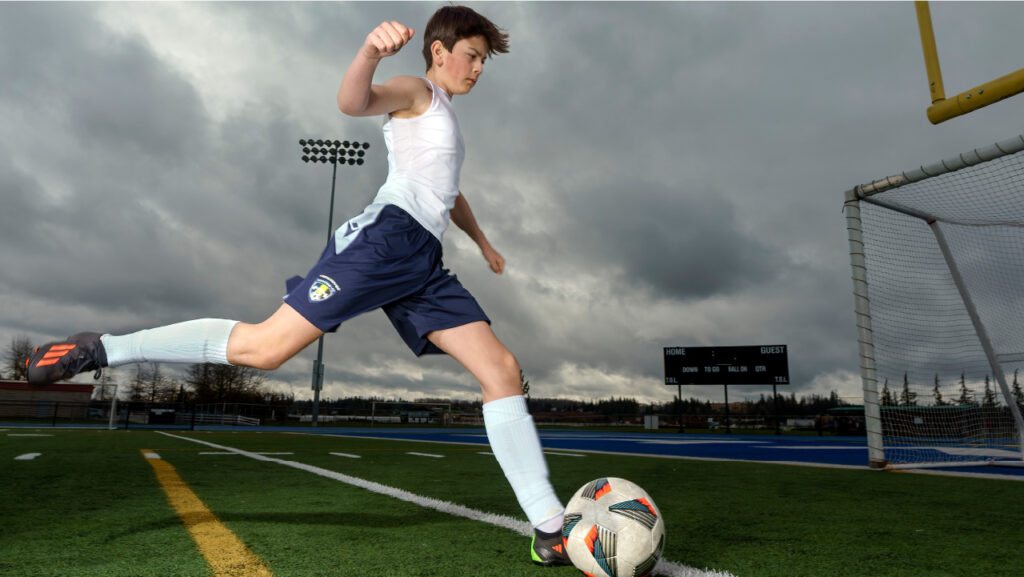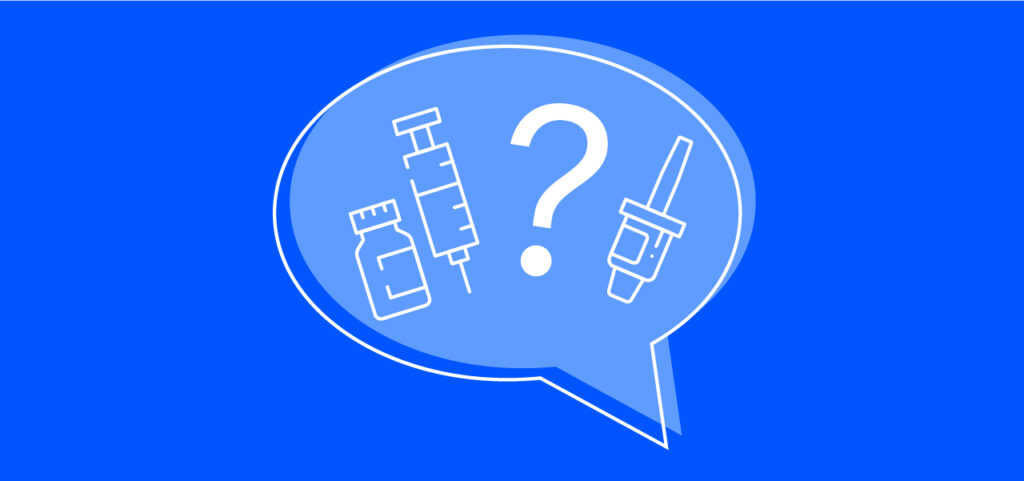
50% of profits go to JDRF
Warrior Hill was founded by a family with both a parent and child who live with type 1 diabetes (T1D) who have a passion for sports and a commitment to helping people with diabetes perform their best.
When Lisa and Aaron Hill’s (who lives with T1D himself) son Luke was also diagnosed with T1D, they knew they wanted him to keep playing sports, something so important to him.
Out of this they created Warrior Hill, a company that specializes in performance wear for athletes with diabetes. They believe that everyone should have the opportunity to perform at their best, regardless of their health conditions. They’ve designed a range of high-quality, safety-focused products that are specifically tailored to meet the unique needs of athletes with diabetes.
It’s their hope that the shirts can help make life a little easier for athletes with T1D, but most importantly with their determination to one day find cures for this disease. Warrior Hill is proud to partner with JDRF Canada to work together towards a world without type 1 diabetes.
JDRF was able to sit down with Lisa Hill to talk about their mission and what drove them to create their products for people with T1D.
JDRF: What made you choose JDRF as your charity of choice?
Lisa: Aaron was diagnosed with T1D first. Luke four years ago. We felt very supported by JDRF. We were at the diabetes clinic for a week at the hospital with Luke, and we received the Bag of Hope through the advisor, and got Rufus and he loved it. He was ten years old, (he’s 14 now) and he just loved the bear with the story book. I signed up for their peer support program Talk T1D, and had another parent call me, and they really helped me through some struggles. After this, as a family we started volunteering with JDRF, Aaron had a soccer program and donated through that. We started participating in a lot of events, we were the family showcased at the Vancouver gala, we’ve done the Walk.
So, when the business developed, we already had the relationship with JDRF developed organically, and we knew it was the perfect fit.

JDRF: Can you tell us a bit more about your personal family story?
Lisa: It was crushing for Aaron when Luke was diagnosed. Aaron was an adult when he was diagnosed (he was 38), and he shouldered much of his diagnosis and disease himself. But he knew how challenging a disease it is to live with, even if he handled his diagnosis with stoicism and toughness. So, when Luke was diagnosed, he was devastated, knowing how taxing T1D is – physically and mentally, emotionally. But he believes that he was diagnosed first to help Luke better prepare for life with diabetes.
We noticed the signs in Luke; the lethargy, throwing up after a high carb meal, the lack of energy – he went from being from a super active kid to this. We had a blood glucose monitor from Aaron, so we were able to test him both fasted and after eating a meal, and when the number was super high, we got him right to the hospital.
Because we knew what to look for, we caught Luke’s T1D very early, thankfully he didn’t have DKA (diabetes ketoacidosis), and didn’t have to stay in the hospital.
Of course, I was upset when Aaron when diagnosed, but you feel like he can handle it. He’s a tough guy, he can deal with it. But when it’s your child it’s a whole different feeling. And it was harder for us when Luke was diagnosed.
But for Aaron, he (and we) felt a lot more prepared to know how to manage Luke’s diabetes. It wasn’t new to us. If there is a silver lining to be found it’s that the positive of coming first is that Aaron can help Luke with the journey. Knowledge is power.
JDRF: Can you explain a little more how the Warrior Hill clothing works:
Lisa: A bit of history, my son Luke plays a lot of sports, he plays high level soccer and basketball, in addition to baseball, but we always found it hard with him, because if he removed his pump, he would get adrenaline highs, we’d be fighting the highs long after. Getting the highs low is harder than getting the lows up. He would feel like he had the flu, be lethargic, and of course, it affected his play.
We looked around, but we couldn’t find anything, so I made a shirt for him that could hold his pump when he wore his uniform.
Necessity is the mother of invention, and so I made the shirt for him. And the products we sell through Warrior Hill evolved after the last two years, of testing fabrics, tightness, pump locations. And what is there now – it’s a special pocket that’s lightly padded and is between the shoulder blades. It’s been proven to be one of the safest locations for an insulin pump while performing contact sports. You can wear your jersey over it and the pump stays on. Now Luke can compete at a higher level. It’s been a gamechanger. The basal that was lost during the game, made him so high and we couldn’t get it back for hours after. This shirt can be worn under a jersey, or team shirt, or even on its own.
I feel a lot of people with T1D are afraid of wearing their pump during activity, or just going into exercise with their pump –but there is so much research and study that shows you will perform better when you wear it.
And so really, Warrior Hill just started out of parents’ trying to find a solution for your child.
Sports was always one of my biggest anxieties. Knowing that he can wear his pump now helps so much and he just wouldn’t have the opportunities to play the sports that he does and at the level that he does without it. We never want him to miss out on the teams that he plays on – sports are a huge part of his life and helps him both physically and mentally.
It’s not fair for kids to be left out because of diabetes, so this a solution that can help them play too, and at the level they want.
JDRF: Is anything else you wanted to share with the T1D community who will be reading this?
Lisa: As a T1D parent, for us and our company Warrior Hill, I wanted to make sure also to touch on mental health. Just keeping your body moving, is so important for both physical and mental health. We don’t want anyone to miss out on what they love out of fear from diabetes. There are tools out there that you can use, meals, carb counting, educating yourself on what food to eat before exercise. Please – don’t let diabetes stop you. We want to support all people living with T1D with their goals, and to be athletes if they want to be athletes.
I’ve seen it with my son. He plays in soccer tournaments, basketball tournaments and he doesn’t miss out on anything because of diabetes. And that is our hope to offer all Canadians living with this disease. And we will support JDRF who work to make life easier for people with T1D now while helping to fund the research that gets us closer to a world free from type 1 diabetes.
To learn more about Warrior Hill and their athletic clothing for people with type 1 diabetes, please visit: warriorhill.ca

